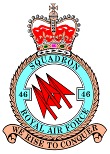|
I was now in a Nissen hut with the rest of the "bashers" and each hut had a young Arab boy to look after the billet, keep it clean, take and return our laundry - just a general "dogsbody". I suppose they were glad to earn a few piastas. When I had any spare moments when I was up in the desert I was carving bits of wood into a Wellington bomber, wingspan of about 8". I made it so that it all pegged together so it was easily dismantled for packing away. One day our boy saw this model plane and he was so entranced could he have it "please", so I gave it to him but on the way out of camp in the evening all Arabs were searched. Of course, the plane was found, the SPs brought him back to me to verify his story', which of course I did. Poor lad was frightened to death.was cancelled. Fortunately (or unfortunately, whichever way you look at it) the Germans had already occupied Cos so it was back on our way to Idku. We stopped at a transit camp in Haifa for a night and it was here I became friendly with one of our chaps. He was a wireless mechanic. I had started to read some cycling magazines that had been sent out to me by a very kind gentleman by the name of Mr Scott who lived in Balham, London. I was so very grateful to him for sending me those books. As I was reading this chap came to me and asked if he could have a look. He was a cyclist too. His name was Gill Taylor. He was a member of the Rhos-on-Sea Cycling Club. He was a very good racing cyclist. I passed those books to him when I had read them. We arrived back at Idku on 25th November 1943. During the Christmas period we were able to get to see Geraldo and his band and also Harry Roy and his band. Chapter 8
On 4th January 1944 we once again left Idku on another detachment back to St Jeans in Palestine. After a little while there we moved again on 6th March 1944 to another airfield at Ramat David, east of Haifa. We were here for about a month and what a disastrous month it was. We had two planes crash on landing and another plane was missing for some time. It was eventually found burned out. One day our C.O. gave me a truck with a driver and told me to go around the country to try to find an oxygen charging plant and although we travelled all day around Palestine I could not find any help at all. So every time we required oxygen bottles a plane had to fly back to Idku for them. We left Ramat David and returned to St Jeans on 9th May 1944. It was during our stay here that I was informed that I was to give my two instrument chaps a field examination to see if they were eligible for any promotion. They were both AC/11 Group II, their names being Thompson and Ferguson. I set out an exam paper for them and asked a few questions and I was able to pass them both to the rank of AC/I, for which they were very pleased: it meant more pay for them. On 6th June 1944 we heard of the invasion of Europe. I do not seem to recall any rejoicing. Our C.O. on the detachment was Squadron Leader Hilary St George. One day he told me that I had to keep all clocks in aircraft at the correct time or I would be in trouble. So clocks became top priority. It was on 2Oth July 1944 that I was given four days leave to be spent at a Jewish Kibbutz at Ramat David. I was with two other lads, George Cook and Frank White. It was a complete rest. We just lazed about all day long, eating grapes and sleeping. Leave over, we returned to camp and on 4th October 1944 we left St Jeans and returned to Idku. This time we had been in Palestine for over nine months. On 6th November 1944 we were told the sad news that the squadron was disbanding, some returning to England but most of us ground crews who still had overseas time to complete were posted to different units. I really thought that this was a disastrous step. I felt at the time (and still do all these years after) that with all the experience the aircrews and ground crews had on Beaus, the Squadron could have done noble service if we had given our support to the advancing 8th Army all the way through Italy. It was a great loss to be split up from so many good chaps and friends. So, on 10th November 1944 I left Idku for the last time and travelled to R.A.F. Ismailya by the Suez Canal and the bitter lakes. Ismailya was a large pre-war station with large brick built barracks blocks and verandas. This was also the first station I had been on with W.A.A.F. personnel. Ismailya was an F.T.S. (Flying Training School). There were large hangars and there I reported to the main instrument section. The Sergeant in charge was due to go home so he was very pleased to see me. One of the first lads in the section I saw was "Tinker" Bell, whom I had been with at Halton on a Group I course in 1941. I was pleased that I was once again on the flights. Here there were Spitfires, Hurricanes, Harvards and a very nice plane, the Mustang. |





